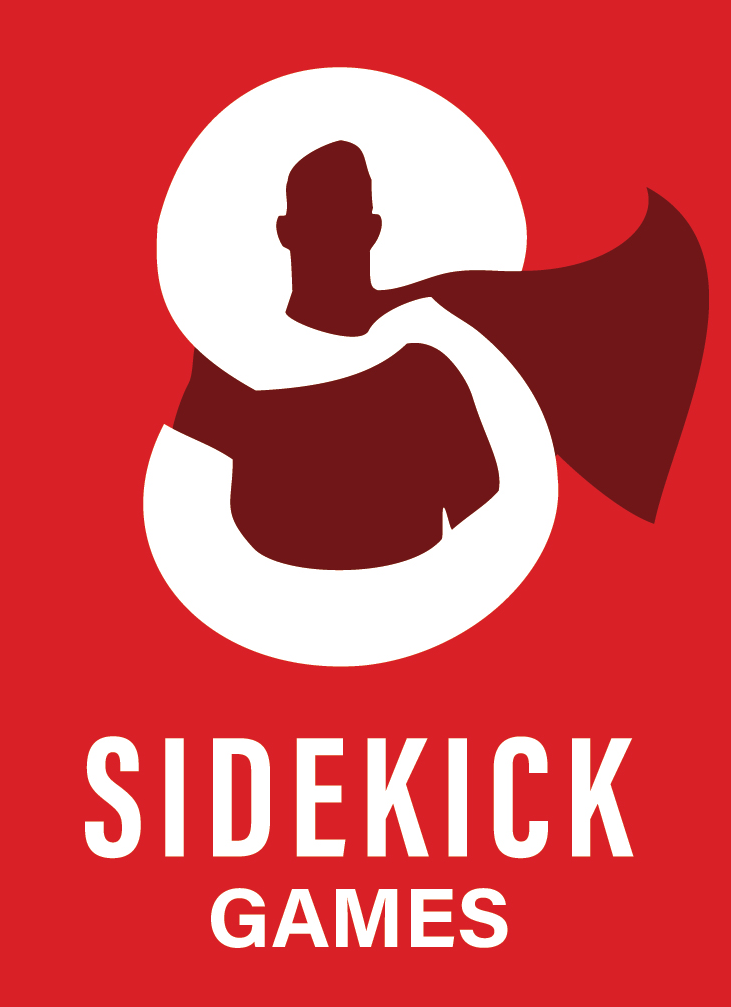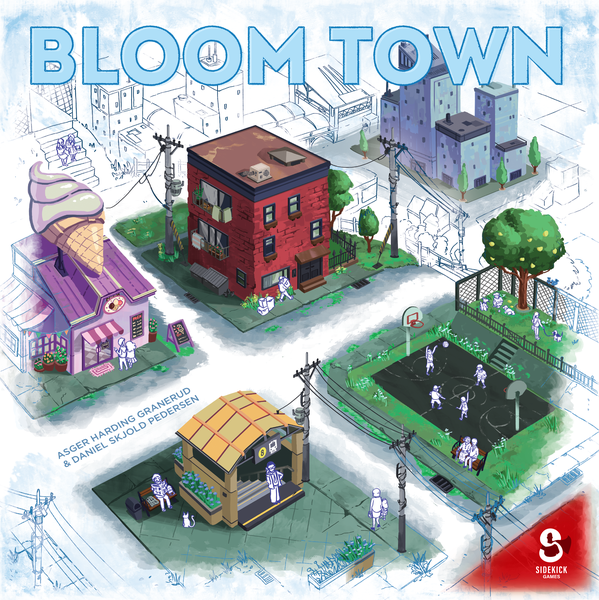Two weeks ago I shared a discussion I had in 2018 with Asger Granerud, designer of, amongst many other things, Shaky Manor, Flamme Rouge, Copenhagen, and 13 Days. This week, I bring you a follow-up discussion. Almost a year ago to this day, Asger and longtime colleague Daniel Skjold Pederson founded Sidekick Games, their own game company. I therefore had a chat with Asger about that particular endeavor, and thought I’d share it with you!

JV: Hey Asger! So since our first talk, you have made the jump to self-publishing! Congratulations on starting Sidekick Games! Could you talk about what made you so interested in it?
AG: It’s such a wide topic… let’s start with the financial aspect. Starting a publishing company is something Daniel and I have discussed loosely for years. Different games and different approaches over the years.
Financially the potential upside is rather big. However, we are also moving risk onto ourselves. Personally, when new indie publishers are discussed, my biggest concern is always that they’ve underestimated how difficult it is to actually sell thousands of copies of a game. Doing so requires a lot of work, luck or investment, and sometimes I get the impression that people optimistically hope all it requires is a good game, and the rest will happen automatically… I’ve warned several friends and acquaintances in the above scenario NOT to publish themselves.
JV: So what makes Sidekick Games different?
AG: I founded and ran Spilbræt.dk for 3.5 years. It is a board game distributor in Scandinavia, and though I’m no longer involved, it still carries 1000+ titles, and moves big volumes every month. This means I’ve been exposed to a lot of details of publishing. Not just the practical details of logistics, manufacturing, etc. but more importantly the network that goes with it. I am on a first name basis with distributors across EU, and we’re already pushing to have Bloom Town localised into several markets.
JV: And what made you take the plunge now?
AG: Two things influenced that. 1) We wanted a game that was simple to produce, acknowledging the fact that we aren’t manufacturing experts. Bloom Town fits the bill. 2) We had a lead with a small chance of success, to eliminate some of our risk, by selling the North American rights exclusively to Walmart.com. We pushed for this, and managed to find a solution all parties were happy with.
Normally the risk of self publishing is why I warn against it. None of us have a crystal ball, and though I am very proud of Bloom Town, I also realise that it’s ultimate success is largely out of our hands. However by choosing the right project, and being lucky with a lead, we managed to reduce the element of risk enough that we simply had to try.

JV: What about the creative aspect of design? How did that translate to publishing?
AG: It has allowed us to dig deeper into the product design than we typically do. Often we do get to have some say when we sign with others, but having full control, and ultimately full responsibility, is of course a different matter entirely.
We’ve spent months getting our company logo just right, and the details we’ve adjusted in the art have been minute. Even if we are a first time publisher, I have full faith Bloom Town can stand on a shelf and still sparkle despite being surrounded by much more experienced publishers 🙂
JV: A lot of self-published designers lament that they now don’t have time to design games, given how much of their time goes into business stuff. What’s your experience been like?
AG: Largely the same, but I hope it gets better. We’ve had to move real fast early in the process, find freelancers all over, coordinate them, and handle dozens of other details. Normally when we go to Spiel Essen we bring close to 15 games to shop around, and this year it is closer to being 5.
We did realise it would be an issue ahead of time, so we did bring in friend and fellow game designer Danny Halstad as our project manager on Bloom Town. Without him it wouldn’t have materialised.
JV: When did you decide you’d self-publish Bloom Town? Did you try pitching it to established publishers first?
At Essen 2018 we shopped it around to four of the top tier publishers, and a few of them still hadn’t declined when we pulled it. The kicker for going forward was the WM deal, and those initial talks started back in October 2018.
JV: Is this a one-time occurence, or do you plan on self-publishing more games? If so, how would you decide what to self-publish and what to leave to other publishers?
We don’t have a big chrome plan rolled out. We do know we have an appetite for more, and want to see how we can move forward utilising what we’ve learned this time. Right now there is only one thing we worry about, and that is supporting Bloom Town and getting it attention in this crowded place.
The “plan” is 0-2 games a year, and only our own designs. In practice we do not expect choosing what to pitch will be that difficult. For us to consider it for Sidekick Games, it has to be a relatively straight forward production, as we want to minimise risk and complexity. We are also mostly looking for the very mainstream games, as we want to put our energy into something that could potentially stay in print. Having said that, I can’t rule out that a vanity niche project might also have better chances at materialising from inside our own ranks. Time will tell!
JV: In our last talk you said “I do believe designers [who self-publish] have a possibility of reaching their audience directly, and when doing so you probably need to sell a 10th to make a living.” Has that math held up to real life?
AG: There is no real life data yet, as we still haven’t sold a copy to an end user. But the back of the envelope math still holds, and some scenarios can even require less than a 10th.
The BIG difference is somewhat of a black box to me though, and that is the brand and company value we are building. Our goal isn’t to sell the company, the goal is to create a lean machine with a great team that releases 0-2 fantastic games a year, some of which manage to become evergreens. Should someone ask to buy it for a ridiculous amount of money, we’re not likely to say no, though. This value is hard to estimate as it is so diffuse, but it is also one of the major differences between self publishing and going through others.
JV: There’s been a lot of “first level” advice on self-publishing. As an experienced professional in this industry, could you share some of the issues you were still surprised by on the publishing side?
AG: I’m not sure if I was surprised by the minute details that need to be coordinated across many people, to make such a project bloom, but if not I willfully ignored it initially. You will need a team, and unless you’re an expert on all relevant subjects, finding the right people is obviously paramount.
JV: Can you give us a short list of those skills that you need to be successful?
AG: Project management, Logistics, Production planning, Graphic Design, Illustrations, Art direction, Sales, Marketing, Development, Rules editing, Product/industry knowledge, Maximizing Conventions. Whether you become an expert or hire one, you need all of those.
/pic5089774.jpg)
JV: Do you plan on self-publishing some of your already published games if/when the rights revert back to you?
AG: There are no plans to do so, but obviously it would be much less work!
JV: Without going into specifics, can you give us an order of magnitude of how much capital was invested (including art, graphic design, dev work, project manager) for Bloom Town?
AG: If you include every expense we have had including manufacturing, marketing etc. we are probably closing in on $75K. However, our expectation is that would go down as we are deliberately working on keeping the project simple to manage, over cutting costs.
None of the above includes any pay for project management, designer royalties or advances, etc. We get paid when it becomes a success 🙂
JV: Well thanks a bunch Asger, and I wish you two all the luck in the world!